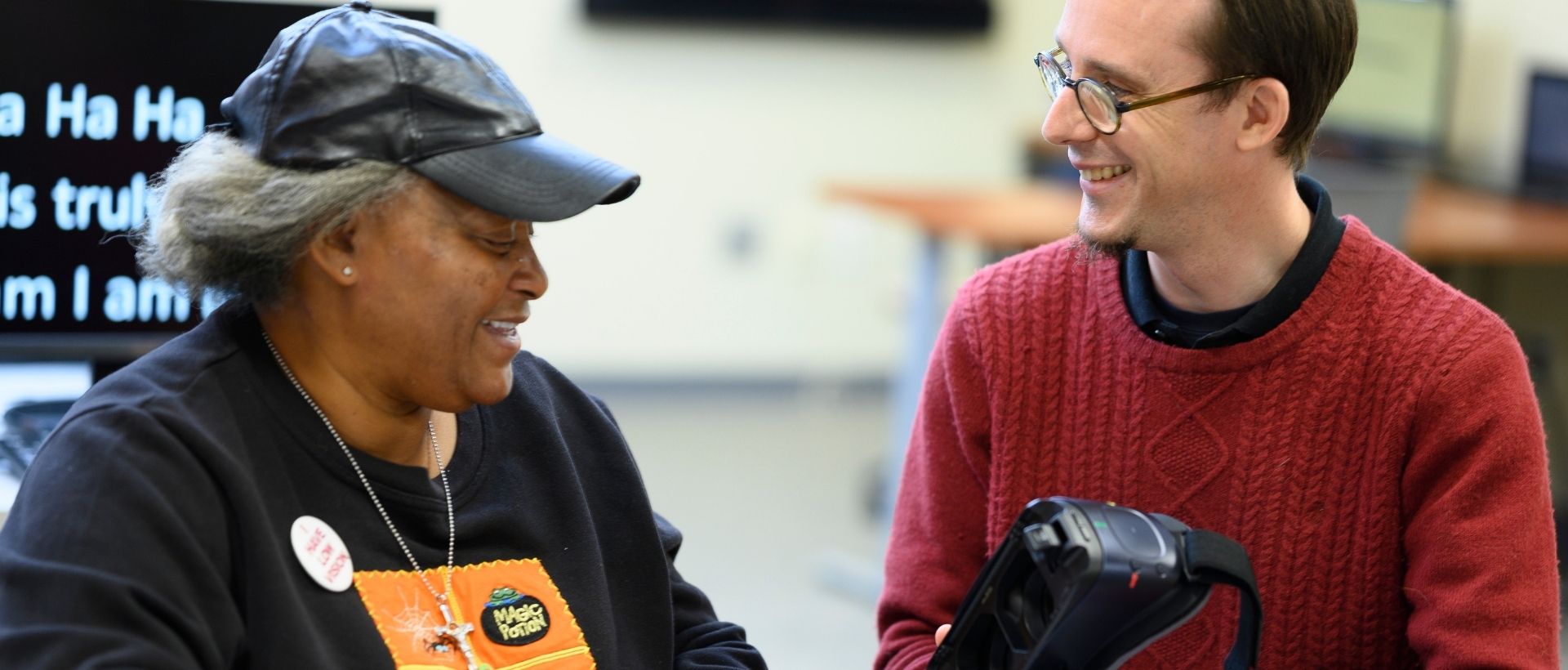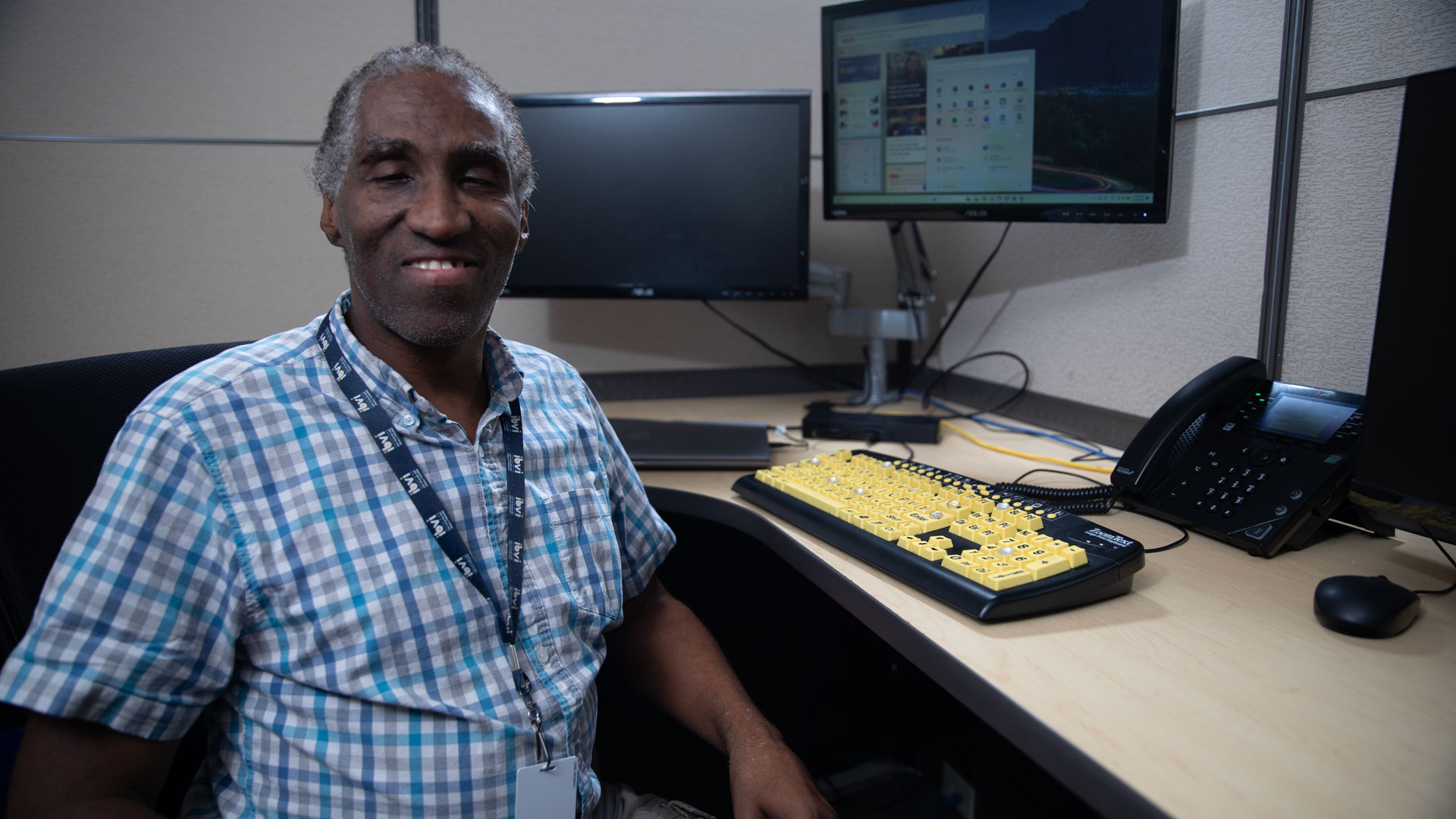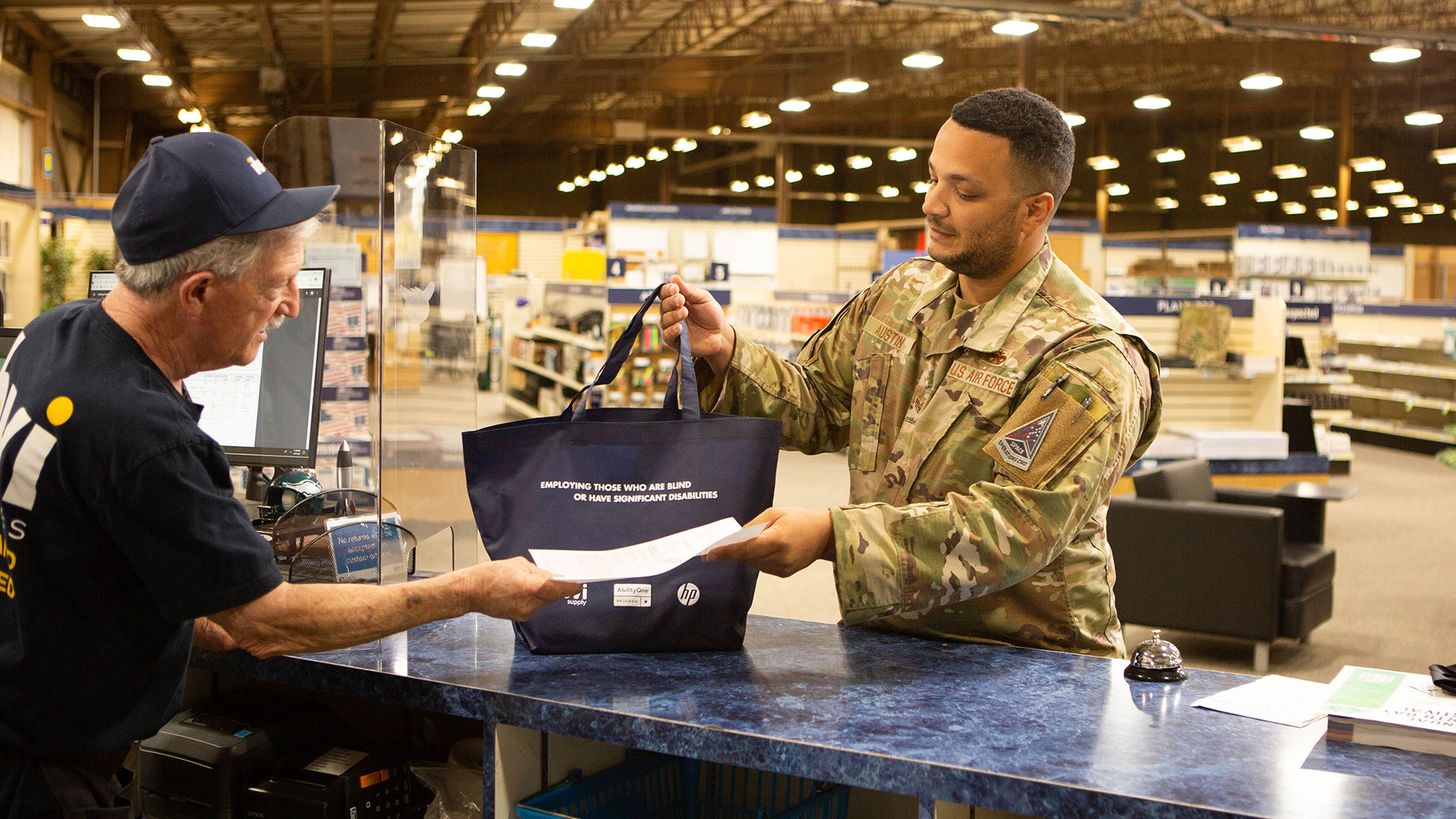Advocating for equal employment opportunities for people who are blind or visually impaired is what Vision Forward has been committed to for over 100 years. And although progress has been made, there is still work to do in our community. A diverse workforce is a tremendous asset to businesses, and Vision Forward strives to equip individuals with the skills needed to successfully contribute to an integrated, equitable work community.
Facing the Challenge
Today, 70% of working-age adults reporting significant vision loss are unemployed. As a result, 30% of this population is reported as living below the poverty line. However, at Vision Forward, we work to help individuals beat those odds every day.
When a person loses their vision, several areas of their life become impacted—reading printed materials, recognizing faces, using a computer, traveling to work—and each individual needs to learn how to do many things differently.
Vision Forward’s team works with individuals to identify their specific, unique needs before building a plan for achieving their goals through specialized training and the use of assistive devices. Through these services, individuals can become more efficient in daily tasks, once again pursue activities they enjoy, and seek meaningful employment.
Using Technology to Empower
When clients are looking for employment or sustaining their current jobs, we often recommend technology training. For most, technology provides a level of convenience. But for people impacted by blindness or a visual impairment, assistive technology makes inaccessible tasks possible. And, in doing so, it increases independence, quality of life, and sense of self-worth while allowing them to be competitive in the job market.
Most jobs today require extensive computer use to accomplish daily tasks. Screen magnification and screen-reading software allow employees who are blind or visually impaired the ability to successfully use computers. Screen magnification increases the size of text on the screen and provides other visual enhancements such as color contrast and large mouse pointers. Screen readers provide text-to-speech by converting text on the screen and text typed into audible speech. Current smartphones and tablets also provide these accessibility features, ensuring employees stay productive outside of the office.
Knowing the Available Tools
Knowing which tools are both needed and available to succeed is half the battle. Empowering adults to be confident self-advocates as they look for new employment opportunities or request adaptations to their current work environment is key. We are here to help both employees and employers ensure the appropriate tools and accessibility components are available and integrated into every job.
Joining the Cause
Partnerships with employers who are committed to hiring employees with vision loss and see the opportunity to diversify their staff is something we highly value and do—and encourage others to do as well. We know that, with the appropriate training and tools, employees who are visually impaired are successful in their jobs and add great value and a different perspective to places of employment and the community.
Ensuring equitable and meaningful employment opportunities for people with visual impairments is a value we should all have as the benefits to employers are great— enhanced culture, profitability, and employee retention, to name a few. Ultimately, having equitable and meaningful employment opportunities for people with visual impairments is good for us all.
Learn more about how you can enhance technology opportunities for your employees at vision-forward.org.
Terri Davis is the Chief Executive Director at Vision Forward Association, a nonprofit organization devoted to empowering, educating, and enhancing the lives of individuals impacted by vision loss through all of life’s transitions. Vision Forward offers support, education, and training and a full spectrum of programs uniquely designed to restore hope and build confidence and independence for people of all ages living with vision loss. For more information about Vision Forward’s mission, please visit www.vision-forward.org.


